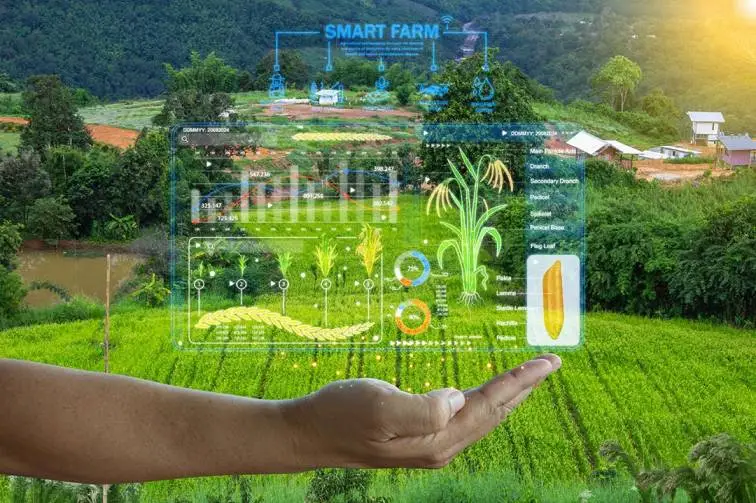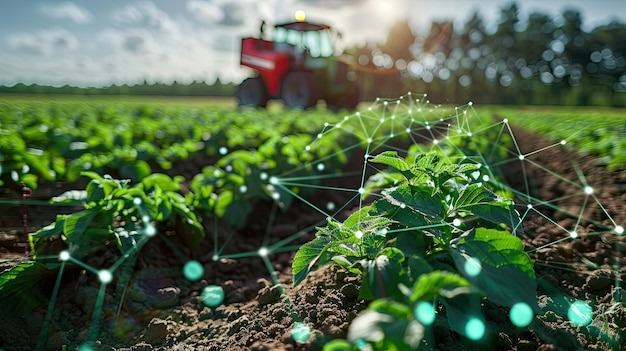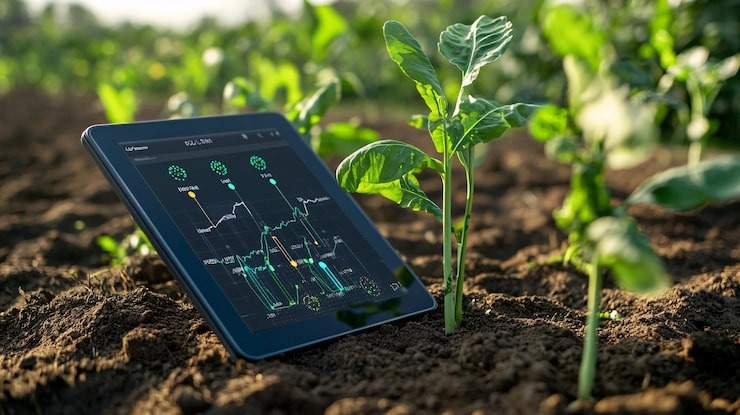
In today’s cultivating world, innovation is not fair a buzzword—it’s a need. Savvy sensors offer assistance ranchers screen soil, climate, plants and more. With the right sensors you can increment edit surrender, diminish squander, and make superior choices.
This web journal covers why best smart sensors for farming, what to see for, and at that point presents ten best sensor sorts for 2025. It employments simple dialect, brief sentences, and takes after Google’s rules for clarity and value. The best smart sensors for farming are:
- Soil moisture and nutrient sensors for managing water and fertilizer.
- Weather sensors for monitoring the environment.
- Optical and LiDAR sensors for detailed crop and land analyses.
Other useful sensors are GPS for location and electrochemical or pH sensors for soil health.
Why Smart Sensors Matter in Farming?

Farming has changed. You no longer fair ‘seed, water, harvest’. You presently screen and enhance. Keen sensors are key. They:
Monitor real-time information: soil dampness, temperature, supplements, light, CO₂
Help exactness water system and compost used. This maintains a strategic distance from over-watering and over-fertilising.
Detect trim stretch early (illness, supplement insufficiency) so you can act some time recently major loss.
Enable way better yields, lower input taken a toll, and more maintainable farming.
In brief: more intelligent sensor utilize = superior cultivating outcomes.
What to Look For in Keen Sensors?
When you pick sensors, consider these:
Accuracy & unwavering quality: The information must be redress and consistent.
Suitability for your cultivate: Field crops vs nursery vs indoor—needs differ.
Integration & network: WiFi, LoRa, cellular, cloud-data etc.
Ease of utilize & upkeep: Ranches are rough environments—sensors must last.
Actionable information: The sensor must grant you data you can act on (flood, prepare, harvest).
Top 10 Smart Sensor Types for Higher Crop Yield

Here are ten shrewd sensor sorts that can offer assistance raise your edit yields in 2025. Each thing is clarified in straightforward terms, taken after by how it boosts yield.
1. Soil Dampness Sensors
Soil dampness sensors degree how much water is in the soil.
Why this things: Over-watering or under-watering both diminish surrender. When you know dampness levels, you can flood smartly.
Yield advantage: Way better root development, more beneficial plants, less water stress.
2. Soil Temperature Sensors
These sensors screen the temperature of the soil.
Why it things: Plants sprout and develop best in certain temperature ranges. Soil as well cold/too hot moderates growth.
Yield advantage: Way better timing of planting, quicker development, more grounded crops.
3. Soil pH & Supplement Sensors
Sensors to degree soil acidity/alkalinity (pH) and supplement levels (nitrogen, phosphorus, potassium).
Why it things: Supplements must be accessible in the right sums. pH influences supplement uptake.
Yield advantage: Progressed supplement utilize, less squander, more beneficial crops.
4. Discuss Temperature & Stickiness Sensors
These screen the surrounding discuss temperature and the sum of humidity.
Why it things: Tall stickiness can cause malady. Temperature things for development and for bug risk.
Yield advantage: Less illness misfortunes, way better climate control for nursery or field.
5. Light / Standard (Photosynthetically Dynamic Radiation) Sensors
These degree the light that plants can utilize for photosynthesis.
Why it things: If light is as well moo, plants cannot develop well. In nurseries any supplemental lighting ought to be optimised.
Yield advantage: Way better photosynthesis = way better growth.
6. CO₂ & Gas Sensors
Sensors that degree carbon dioxide levels, alkali, other gasses in encased ranches or greenhouses.
Why it things: CO₂ levels impact plant growth/kind of digestion system. In nurseries you can enhance CO₂ for higher yield.
Yield advantage: Quicker development in controlled environments.
7. Optical / Leaf Wellbeing / Trim Wellbeing Sensors
These utilize light reflectance or other implies to evaluate plant wellbeing, distinguish stretch, infection early.
Why it things: If a plant is pushed by dry spell, supplement insufficiency or malady, you capture it earlier.
Yield advantage: Early intercession = less misfortune, more yield.
8. Precipitation / Climate & Natural Sensors
These collect information on precipitation, wind speed, sun powered radiation, barometric weight etc.
Why it things: Climate influences cultivating choices: planting, showering, irrigation.
Yield advantage: Superior arranging, less hazard of weather-driven damage.
9. Water Quality / Water system Sensors
These sensors check quality of water system water—pH, conductivity, broken up salts.
Why it things: Destitute water quality can hurt crops or soil, decrease yield.
Yield advantage: Superior water implies more grounded plants.
10. Area / Position / GPS & Surrender Checking Sensors
Sensors that donate area information, outline areas, track surrender zones and variable inputs.
Why it things: Exactness horticulture implies applying water/fertiliser precisely where needed.
Yield advantage: Inputs utilized more proficiently, surrender maximised.
Putting It Together — Sensor Methodology for 2025
Here’s how to using these sensors effectively:
Start with key zones: Choose a field, nursery or edit region to pilot sensors.
Choose the sensors you require most: If dry season is a chance: soil dampness + climate sensors. If nursery: CO₂ + light + stickiness sensors.
Integrate information frameworks: Make beyond any doubt the sensor information is simple to studied. You need cautions, dashboards, activity items.
Set limits and activity plans: E.g., if soil dampness drops underneath X%, trigger water system. If leaf reflectance appears stretch, assess crop.
Track comes about & upgrade: Degree abdicate, input utilize, taken a toll investment funds. Alter sensor positions, sorts, or edges as needed.
Maintenance & calibration: Sensors corrupt or move; normal calibration keeps information accurate.
Final Thoughts
Smart sensors are more than contraptions. They’re devices for superior choice making. In 2025, with climate alter, asset limitations and rising abdicate requests, sensors grant you an edge. Utilize them well. Degree the right things.
Take activity based on genuine information. At that point you’ll see abdicate picks up, fetched reserve funds, and way better sustainability. If you need, I can recognize beat brands, cost ranges, and which sensors are best for particular crops (like corn, wheat, vegetables, nursery). Do you need that?
FAQ's- List of Sensors Used In Agriculture
What are the best sensors for agriculture?
At show, commonly used rural sensors basically incorporate temperature sensors, mugginess sensors, pH sensors, gas sensors, biosensors, photoelectric sensors, and weight sensors.
What is 5G based savvy agribusiness system?
Precision Agriculture: 5G empowers the utilize of progressed sensors and rambles for exact checking of trim wellbeing, soil conditions, and climate designs. Inaccessible Operation of Apparatus: With 5G, ranchers can remotely control and screen rural apparatus, expanding effectiveness and safety.
How is AI used in keen farming?
AI-driven models can analyze past and display cultivating information to distinguish designs, foresee edit yields, and optimize asset assignment. Machine learning (ML) calculations help in early malady location by analyzing unearthly information from partisan and ramble imagery.
What are IoT sensors used for in agriculture?
Applications of coordinates IoT and savvy sensors for accuracy cultivating. IoT-based savvy sensors can precisely screen natural variables such as temperature, dampness, and mugginess. A few sensors can survey soil quality by deciding nitrate levels and water substance.


